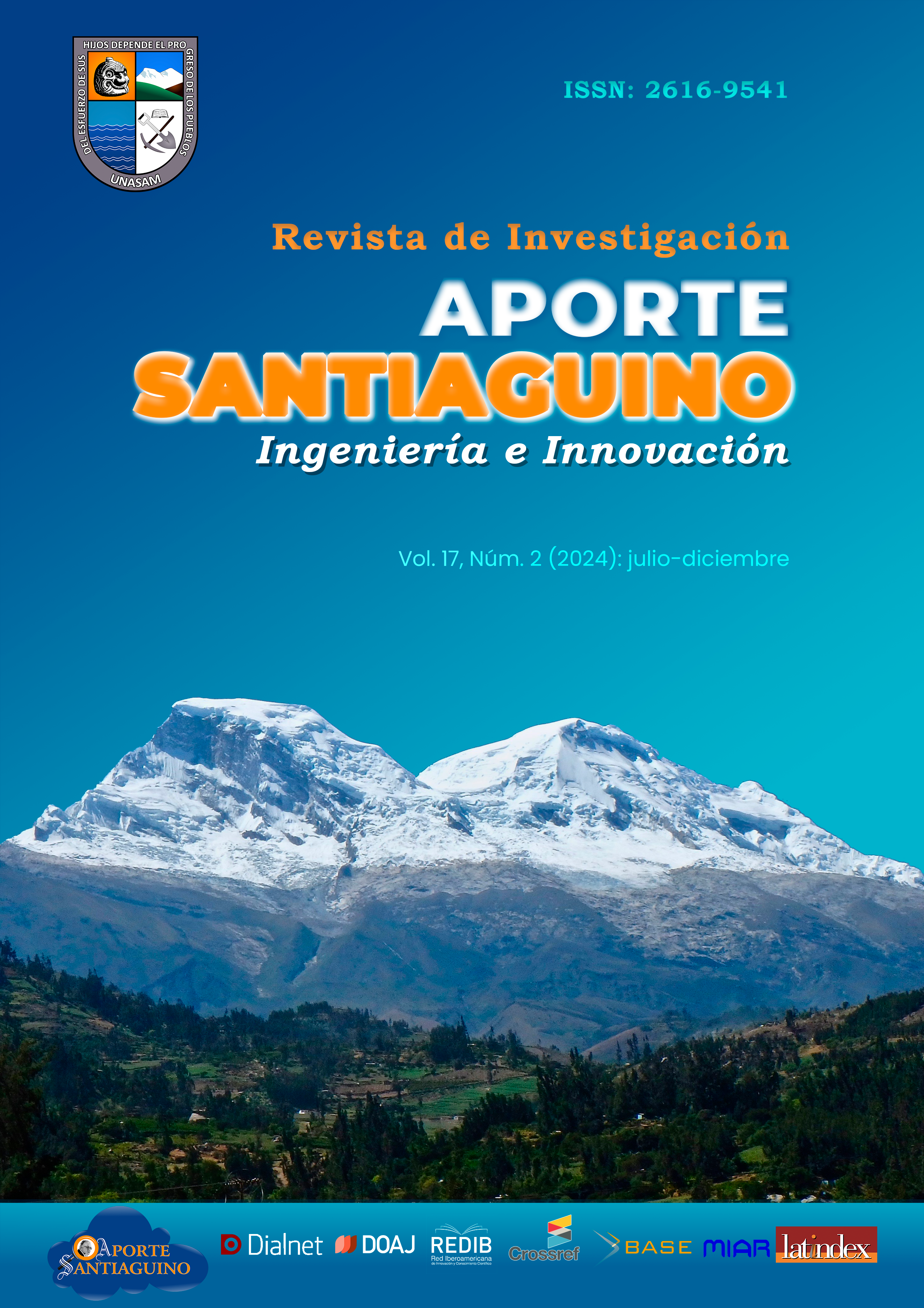Moisture content and support value in cohesive soils in the Independence district
DOI:
https://doi.org/10.32911/as.2024.v17.n2.1171Keywords:
Cbr, Moisture Content, Compaction EnergyAbstract
In this research, the objective was to determine the incidence and relationship of moisture content (CH) in the Support Value (CBR) and density for 12, 26 and 55 strokes per layer for the cohesive soil at the subgrade level of the Shancayan neighborhood. -Huaraz-Ancash, with which CBR isoline maps were created using Excel and OriginPro 2019b. The method is deductive, quantitative approach, experimental and transversal design. The instruments used are data collection sheets, laboratory formats. The sources used are the MTC, scientific article, thesis, books. The results for 0.1” and 0.2” penetration show CBR and Density values that increase and then decrease for different CH. Finally, it is concluded that for values of 13.5%, 12.5% and 10.45% for 12, 26 and 55 strokes per layer respectively, the relationship of the CH with the CBR value above the optimal moisture content (CHO), have an inverse relationship. proportional. The opposite happens for the relationship between CH and the density value below CHO.
Downloads
References
Aburto Aburto, M. A., & Rodríguez López, D. (2011). Caracterización de la resistencia de un material de banco para su uso como relleno compactado [Tesis para optar título de ingeniero civil, Universidad Nacional Autónoma de México]. http://132.248.52.100:8080/xmlui/bitstream/handle/132.248.52.100/466/A1.pdf?sequence=1&isAllowed=y
Braja, M. (2001). Fundamentos de Ingeniería Geotécnica. México: Thomson Editores S.A. https://es.slideshare.net/ralvmrz/fundamentos-de-ingeniera-geotcnica-braja-m-das
Feo, C. L. E., & Alvarado, L. R. (Noviembre de 2012). Uso de mapas de resistencia para el control de calidad en construcción de terraplenes de suelos cohesivos. https://fdocuments.mx/document/uso-de-mapas-de-resistencia-para-el-resistencia-al-corte-no-asi-en-suelos.html?page=2
Juárez Badillo, E., & Rico Rodríguez, A. (2005). Mecánica de suelos, Fundamentos de la Mecánica de Suelos. Mexico: Limusa S.A. https://suelos.milaulas.com/pluginfile.php/128/mod_resource/content/1/Mecanica%20de%20suelos%20-%20Juarez%20Badillo.pdf
MTC. (2014). Manual de Carreteras. Suelos, Geología, Geotecnia y Pavimentos. Sección Suelos y Pavimentos. https://portal.mtc.gob.pe/transportes/caminos/normas_carreteras/MTC%20NORMAS/ARCH_PDF/MAN_7%20SGGP-2014.pdf
MTC. (2016). Manual de Ensayos de Materiales. https://portal.mtc.gob.pe/transportes/caminos/normas_carreteras/MTC%20NORMAS/ARCH_PDF/MAN_5%20%20EM-2016.pdf
Municipalidad Distrital de Independencia-Huaraz. (2019-2021). Plan de Prevención y Reducción del Riesgo de Desastres del distrito de Independencia, provincia Huaraz, región Ancash. https://sigrid.cenepred.gob.pe/sigridv3/documento/7072
Pariona Quintana, L. (2014). Estudio de la resistencia de la sub-base usando experimentos factoriales basado en el contenido de humedad, energía de compactación y la hidratación [Tesis para título de ingeniero civil, Universidad Nacional del Centro del Perú]. http://hdl.handle.net/20.500.12894/408
Rico Rodriguez, A. (2014). Volumen Alfonso Rico Rodríguez. MEXICO: Instituto mexicano del transporte. https://imt.mx/archivos/Publicaciones/Libro/lb6.pdf
Rodríguez, A. R., & Mejía, H. D. (1992). Consideraciones Sobre Compactación de Suelos en Obras de Infraestructura de Transporte. México. http://www.imt.mx/archivos/Publicaciones/DocumentoTecnico/dt7.pdf
Downloads
Published
How to Cite
Issue
Section
License
Copyright (c) 2025 Alfredo Huaman Livia, Elio Milla Vergara, Daylu Pagola Ávila

This work is licensed under a Creative Commons Attribution 4.0 International License.




















